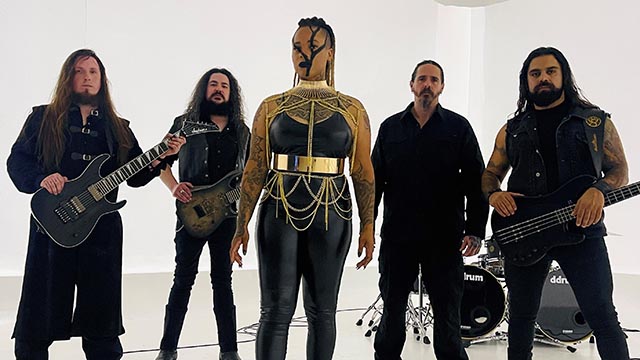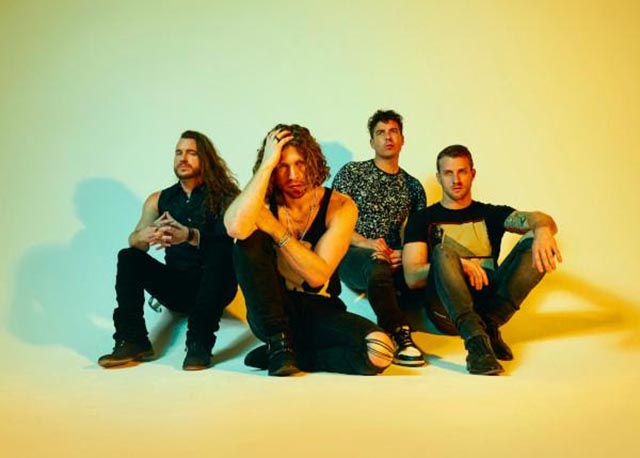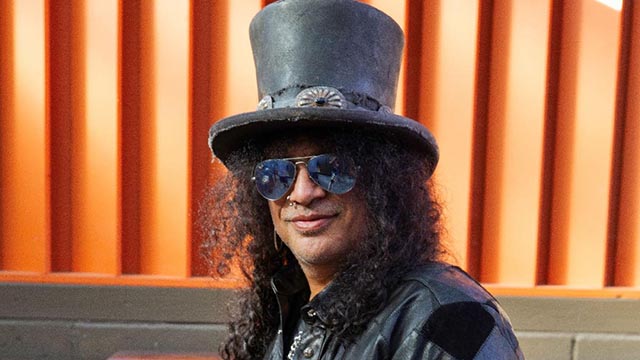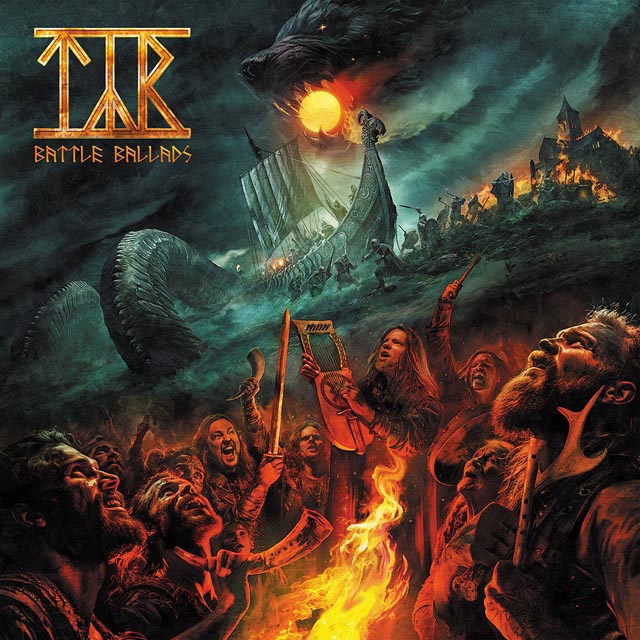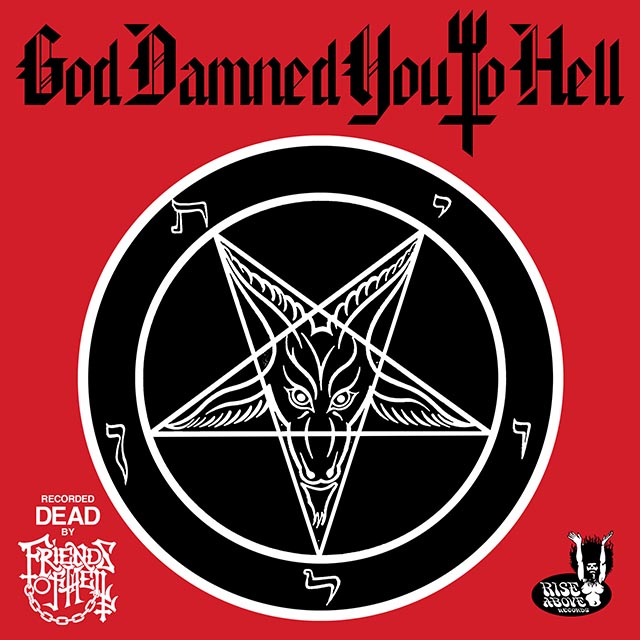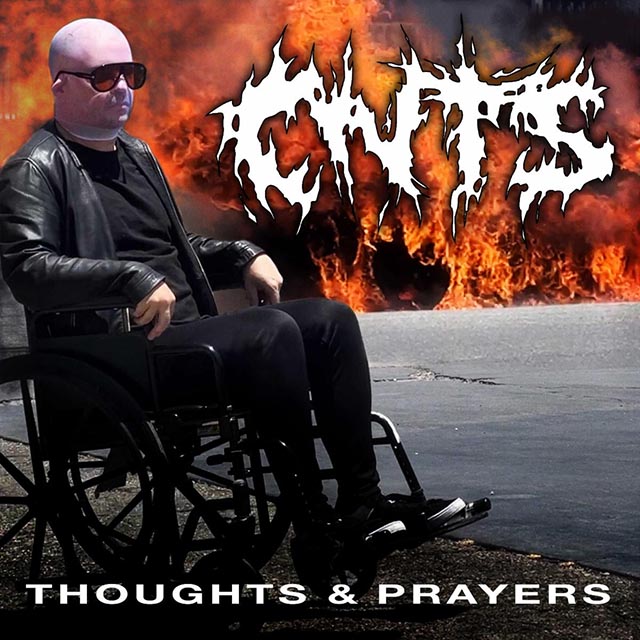
For the last four years, punk photographer Mark Beemer’s Shirts For A Cure project has raised money towards the fight to defeat women’s breast cancer. Over 140 bands have donated their name to exclusive shirt designs, with the proceeds going towards various charities. We caught up with Beemer to talk about how the organization formed and the logistics of running the organization. Shirts For A Cure has a BITPOM design, which is the only way to get merch from us right now. While the shirts can be purchased here (and should be, since it’s supporting a charity), we’re also giving a few shirts away. Leave a comment between now and January 5 to be registered to win.
Describe the formation of Shirts for a Cure, and what they do for those that might not know.
I started the Shirts for a Cure parent organization, The Syrentha Savio Endowment (SSE), in February of 2002 – in the wake of my wife (Syrentha Savio) passing. I felt that I could not let the world forget who she was so I started what I thought would be a small fund that might be able to help a couple of women and let it go. I organized a couple charity dinners, an auction and gathered a team to walk in the National Race for the Cure in Washington DC – very safe and a bit generic. Things went as well as I had hoped; we raised a bit of money and memorialized Syrentha. But, it didn’t feel like “me”.
In the summer of 2002 I traveled with Jade Tree Records to Louisville for Krazy Fest. Along for the ride was Dan Yemin whom I have known for years. Dan and I spent most of the weekend talking about lose and rebuilding – things both of us were going through at the time. The topic eventfully moved to SSE and my future plans and we talked about some goals I had and what I thought might happen. During a pause in the conversation I turned and asked him to re-form Kid Dynamite for a show to raise money. Without blinking he said yes.
Six months later Kid Dynamite played the first of what have become the SSE Benefit Concert Series and SSE started to feel like it could make a real difference. After the KD show, things started to snowball and here we are six years later with more then $1,000,000 raised for treatment and education.
The Shirts for a Cure Project stemmed from a dinner conversation I had with a long time friend in March of 2004. We thought SSE could raise money by selling old hardcore shirts – we would ask all of our old, grumpy ex-hardcore-kid friends from all over the country to donate whatever shirts they no longer wore and we would auction them off on eBay. Though it was a great idea it was a nightmare logistically. A couple of weeks passed and the idea stuck with me – I thought we had something here and there must be a way to get it to work. I remembered reading about a shirt Thursday designed for the Sean McGrath Fund and how well that was received. I thought with the right legwork and enough pressure – we could do the same thing but on a much larger scale.
All proceeds raised by Shirts for a Cure and The Syrentha Savio Endowment go directly to help women fight breast cancer. Thus far we have donated to the Capital Breast Care Center in Washington D.C., The Lombardi Comprehensive Cancer Center at Georgetown University, The L.A. Free Clinic in Los Angeles, The Community Health Center in Chicago and this year we are looking to make out donation to one of the many clinics in the New Brunswick, NJ area.
How many bands do you work with, and how do you go about getting bands involved? Who designs the shirts? Do you pick or do the bands?
At the moment we are working with over 160 bands with roughly 250 shirts on our roster. Though most of the bands we deal with are active we have a growing handful of bands that have been gone for years but still want to help the cause. We are always looking to add new bands and new designs; we try to add a new band per week. We also like to keep a well-rounded roster – from the biggest bands to the smallest.
Adding a new band is usually a pretty simple process; we approach a band that we think will do well for us, once they have agreed to join the roster we set our designers in motion and within a week or so we have a handful of designs to show the band. The band will pick their favorite and we handle the rest; we print it, promote it, sell it and use the proceeds to help women fight this killer.
Do you see better sales online or at the events you have a physical presence at?
Well, that’s a bit of a tricky question. If you just take a daily audit you would find we do better while we are on tour. But, in the long term, we do better online. The tours are very important to us, we are able to educate people on the importance of really detection and at the same time explain who we are and why we are. So, bottom line, both touring and online sales are very important to the success of Shirts for a Cure
Which metal bands sell the most shirts through Shirts For A Cure?
Actually, the first band to ever sign on with us is a metal band . . . Darkest Hour. I love those guys. We have been adding metal bands all along the way. In recent days bands like Killswitch Engage, DragonForce, Devil Driver, As I Lay Dying and Job for a Cowboy have all jumped on board and done rather nice for us.
Why shirts and not anything else?
Ha, the $64,000 question. Well, as Steve Reddy (owner and operator of MerchNow and Equal Vision Records) always says, “until you can download a tee shirt we will be OK”. Tee shirts have always been my thing – no mater what show or who was playing I would always buy a shirt. From my first concert ever, Iron Maiden & Twisted Sister in ‘85 where I paid $8 for a concert-tee, to the most recent time Bane was in town – I just need a shirt. And I know I’m not alone – kid love their shirts and will always love their shirts.
During the Kid Dynamite shows (one show turned into a three day weekend) we sold 748 shirts to 1,800 kids. That weekend showed me that my love of shirts was not abnormal. The journey from that weekend to the conversation over dinner to Shirts for a Cure was a very organic one, just follow your heart and most things will work out.
What has been the most rewarding moment of owning a charity organization?
When we award a clinic with one of our donations we usually announce it so they are aware of what is coming and can prepare for it. Lat year when we donated to the Community Health Center in Chicago we decided to surprise them. I was in Chicago already, meeting with Rise Against regarding a silent auction we were going to run through the Hard Rock Café. After the meeting I drove over to the clinic and met with the directors as if I was just looking for more information. Near the end of the tour of their facilities I surprised them with a $40,000 check. It is moments like that when all the head aches, all the tour dust you breathe, all the late night phone calls, all rain & wind & snow you drive through, all the hell you deal with on tour and in the office worth it. Nothing can take that feeling away from me.
You’ve done at least a couple of designs for Refused. How did this come together? With the band defunct, how were you able to make this happen?
I – and as an extension Shirts for a Cure – benefit from having a large pool of old friends to draw upon. Years ago, the summer of ’93 to be exact, I was touring with a band called Worlds Collide. The last show of a five week cross-country tour was a little room in Atlanta. There were maybe 9 kids at the show but those nine kids really gave it their all. One of those nice kids was a guy named Mike “Phyte” Mowery who would later move to DC and become a good friend of mine. Mowery started tour-managing bands and landed the TM gig with The (International) Noise Conspiracy who is managed by Morgan Johansson – who also managed Refused. Johnansson was pretty impressed with what we were doing and when we asked about Refused he jumped at the chance. I guess we have the only legit Refused shirt available today . . . kinda cool.

